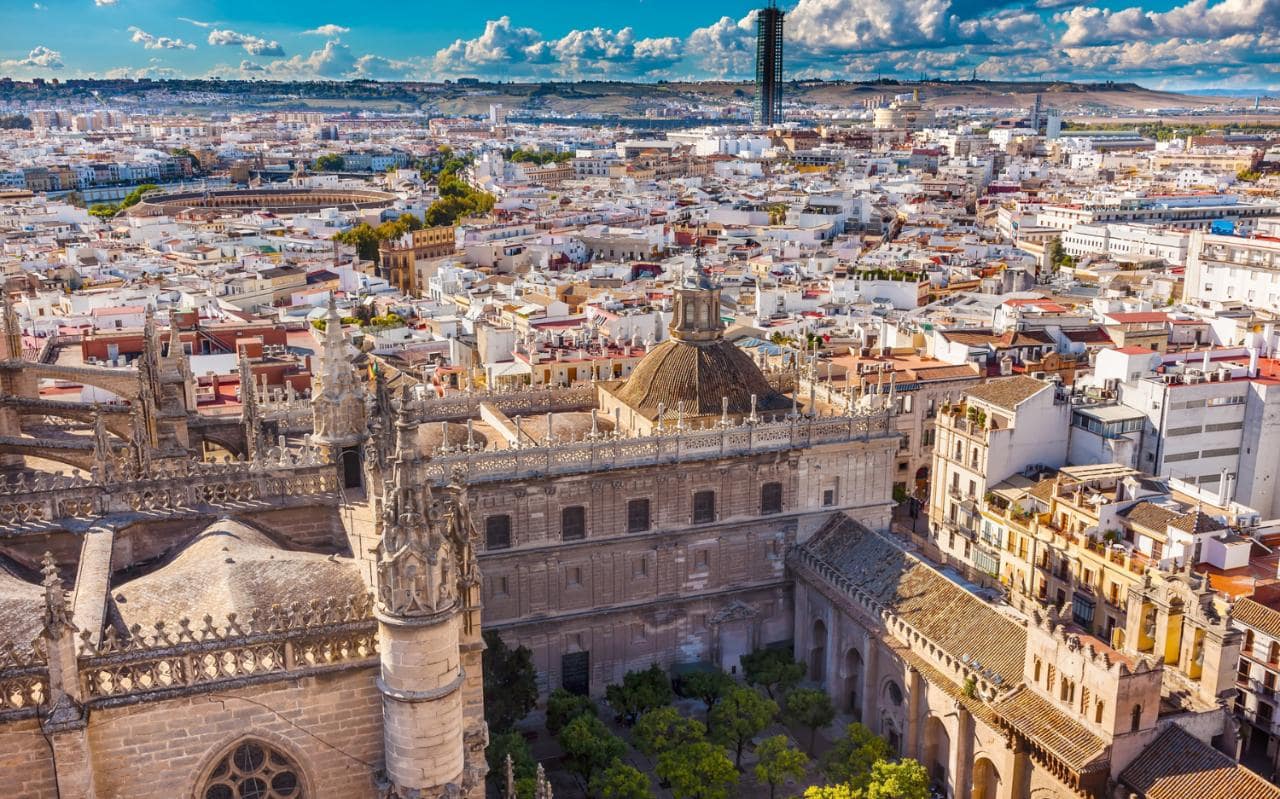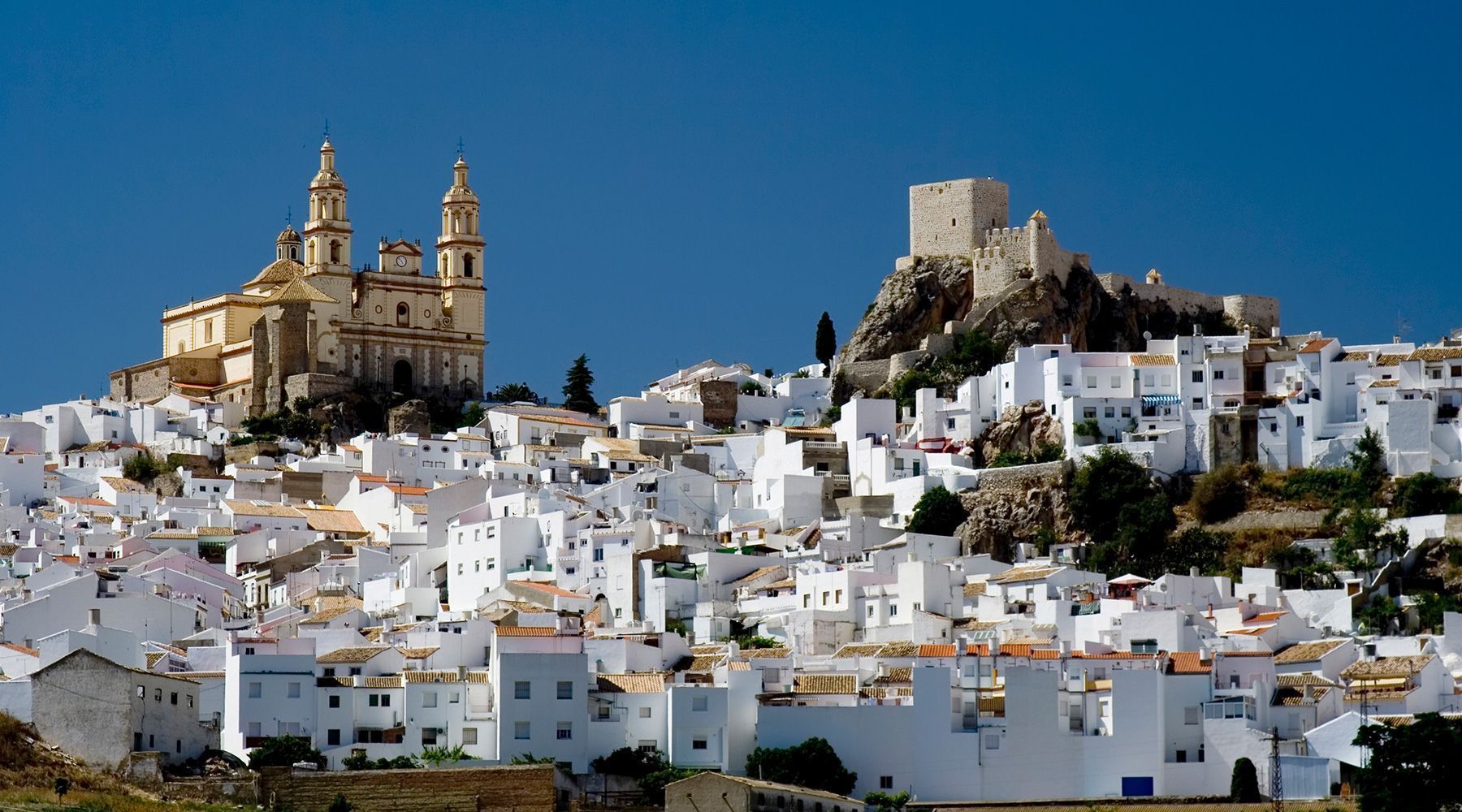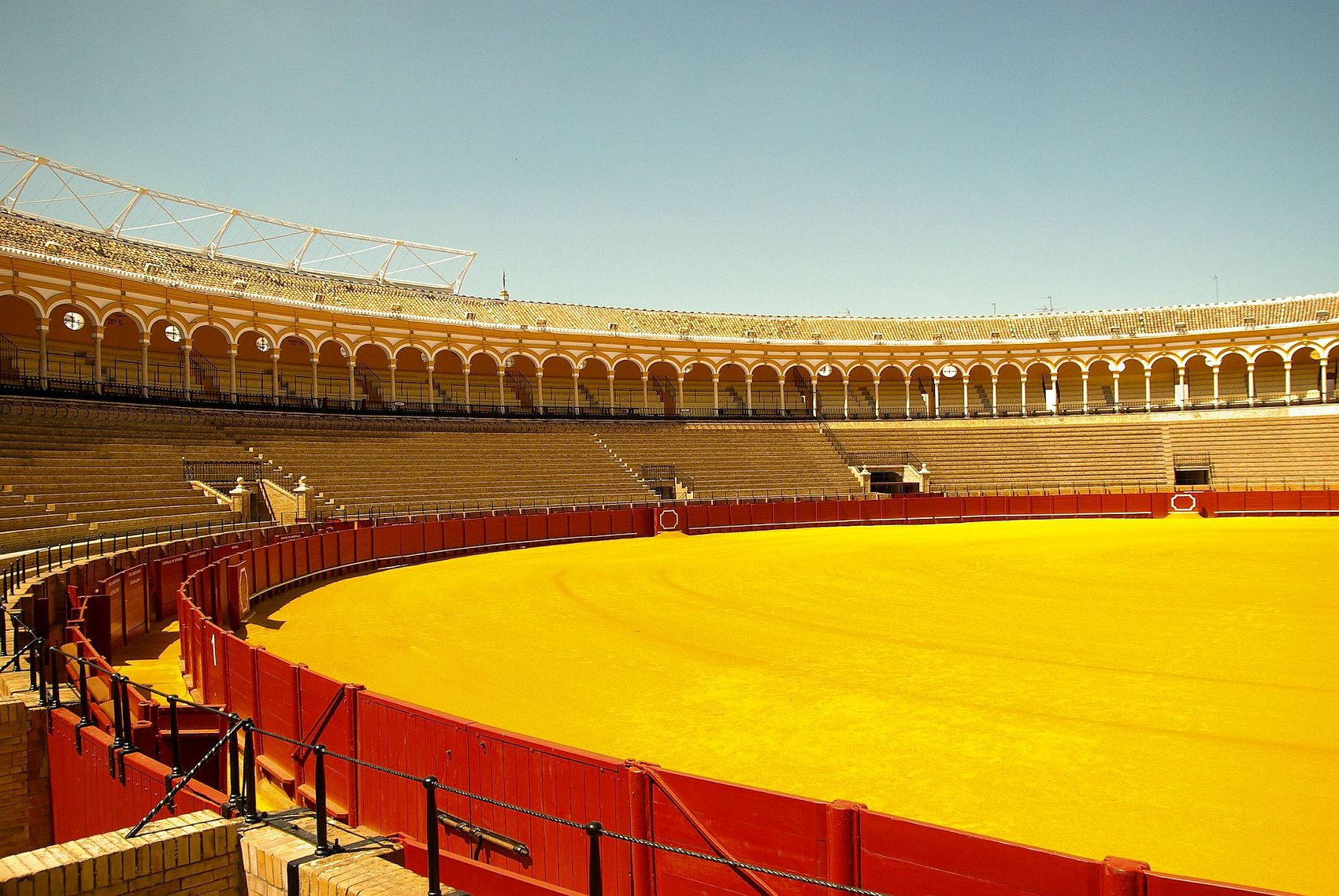The passion of a flamenco dancer, the dedication of a bullfighting matador and the laid-back indulgence of an afternoon siesta are not merely romanticized memories of a long-ago Spain. These cultural traditions are prominent aspects of life in Seville and throughout the country’s southernmost Andalusia region. A city marked by Jewish, Islamic and Christian influences, Seville shows evidence of each religion’s presence in its church facades, minarets and former ghettos. Travelers who appreciate a good dose of history between leisurely strolls along narrow streets and relaxed, drawn-out meals will swoon over Seville’s centuries-old neighborhoods and cultural offerings.
Plan to spend your time in Seville indulging in tapas at a street corner cafe or listening to an impromptu guitarist’s tunes in an open-air plaza. Though the sunshine and laid-back lifestyle may lure you to relax your days away, be sure to make time for visits to the parks, gardens and palaces that showcase the city’s complex history and architectural splendor. If you look closely, you’ll spot “NO8DO” on city buses, benches, bicycle racks and even manhole covers. A rebus for the Spanish phrase “no me ha dejado,” NO8DO translates to “It (Seville) has not abandoned me.” Commit that slogan to memory because it’s likely you’ll adapt this mantra yourself; once you’ve seen the charms of Seville, your experience will stick with you for quite some time.
Best Places to Visit in Europe
Seville travel guide for first-time visitors
Best Months to Visit
The best time to visit Seville is from March to May. During these months the temperatures are mild, the rush of tourist traffic hasn’t reached summer volume and the hotels tend to offer lower rates (except during special events). Plus, springtime hosts the city’s most notable annual festivals like Semana Santa and Feria de Abril. Summers in Seville are some of the warmest in all of Europe, with temperatures often exceeding 100 degrees Fahrenheit. This can cause a lot of locals to flee to the nearby beach towns, making the abundance of city tourists more noticeable. In the fall, temperatures cool off and tourist crowds thin out, but rainy season begins. The winter months bring chillier weather and many Sevillanos spend more time indoors.
How to Save Money in Seville
- Stick to tapas bars Trade large entrees for traditional small plates (known as tapas) that often cost just a few euros each. It won’t take too many to fill you up — two or three dishes should do the trick.
- Walk everywhere Uncover details and walkways accessible only to pedestrians. Plus, walking makes it easy to save on transportation costs.
- Shop open-air markets When purchasing souvenirs, stick to open-air markets where you’re more likely to find artisan wares and lower prices.
Culture & Customs
As the capital of Andalusia, Seville sits as the epicenter of southern Spanish culture — that means you’ll find mouthwatering tapas, inspired flamenco dancing and sizeable slabs of jamón serrano (those cured hams hanging in storefront windows). Another important part of the Andalusian routine is the afternoon siesta (nap) — a two- to three-hour span of the day (between 2 and 5 p.m.) when most shops, bars, restaurants and other businesses close their doors to patrons. Sevillanos use this time to relax or take a quick snooze, affording them more energy for later evenings. Though you many find some places open for business in heavily trafficked tourist areas, you should plan to do your dining and shopping outside of this window.
Spanish is the national language of Spain, but different regions have slightly different dialects. Sevillanos typically drop letters like “s” at the end of words when speaking quickly, so it may be difficult for a novice Spanish speaker to understand much of what the locals are saying. Don’t get discouraged! Sevillanos are usually friendly, patient and eager to help you learn. English is not widely spoken here, so come to Seville armed with some basic Spanish phrases such as: “Hable despacio, por favor” (“Speak slowly, please.”); “¿Puede ayudarme?” (“Can you help me?”); and “¿Cuanto cuesta?” (“How much does that cost?”).
Although religious plurality is part of the city’s complex past, Seville today is mostly a Roman Catholic community. During Semana Santa — the Holy Week leading up to Easter Sunday — religious devotion is on display with extravagant processions that include Catholic symbols and prayers. People flock from all over the world to witness the religious exhibition, so be prepared for crowds if you visit during the festival.
In Seville, you’ll need euros to get by — but one of the best parts about this southern Spanish city is that you won’t need too many. The cost of food, beverages and entertainment is particularly low compared to other European cities: Some of the best tapas can be enjoyed for just €2 or €3 EUR per plate, while many bars serve €1 EUR cervezas (beer). (Since the euro to U.S. dollar exchange rate fluctuates, be sure to check what the current exchange rate is before you go. Major credit cards are accepted at most restaurants and shops.) Tipping waitstaff in bars and eateries is not expected, although a tip of 5 to 10 percent is common in very formal restaurants or when dining in large groups.
What to Eat
It may seem like you can find tapas — or traditional dishes served in small, shareable portions — in just about every major city these days, but the tapas options in Seville are the tried-and-true originals. Plan to try two or three of these varied small plates per meal. Taste favorites like tortilla de patatas (a quiche-like potato dish) or venture for more daring options like rabo el toro (bull’s tail). Some places will have menus in English, but it will be helpful to learn Spanish words like plancha (grilled) and frito (fried) to make sure you’re ordering something suitable for your taste. For some of the best takes on classic tapas, try the restaurant Tabernera Los Coloniales or the oldest tapas bar in Seville, El Rinconcillo (both spots can be found in the El Centro neighborhood). If you’re looking for a more modern twist on the signature dishes, head to upscale restaurants like Vinería San Telmo (located in Barrio Santa Cruz) or Restuarante Egaña-Oriza (in El Centro near the Universidad de Sevilla). Regardless of where you dine, you’ll likely taste lots of olive oil; Andalusia is the top exporter of olive oil in the world, and it’s frequently showcased in the region’s cuisine.
Don’t forget to save room for dessert: Try arroz con leche (rice pudding), torta de aciete (sweet, crispy flatbread) or churros y chocolate (long pieces of sugary fried dough and rich hot chocolate for dipping). And if your guilty pleasures lean more toward booze than sweets, be sure to order a Cruzcampo — the hometown beer brewed right in Seville. And vino del verano is a blend of red wine, Sprite and a twist of lemon that is particularly popular among Sevillanos on the hottest summer days.
Meal times may come as a surprise to those not accustomed to Andalusian culture. Sevillanos enjoy late lunches that usually start around 1:30 p.m. and flow into the 2 to 5 p.m. siesta time frame. Dinners are also traditionally late (think 9 to 11 p.m.) and nightlife continues into the wee hours of the morning.
Safety
Overall, Seville is a fairly safe city with most crime limited to petty theft. Be sure to stay alert both day and night and keep a close eye on your belongings. Like in most Western countries, the food and water in Seville is safe to consume without taking any extra precautions. But if you have a low tolerance for cigar and cigarette smoke, be prepared for some discomfort; it is illegal to smoke in indoor public spaces, so people tend to smoke just about everywhere else.
Getting Around Seville
The best way to get around Seville is on foot. While it is the capital of Spain’s Andalusia region, Seville is a rather small city, and most of the major attractions, shops and restaurants are within walking distance of one another. Bicycles are another popular mode of transportation: Seville boasts many bike lanes and a popular bike share program (Sevici). If the distance seems like too much to cover on foot or two wheels, the city features comprehensive public transportation options, and taxis are easy to find.
The closest airport to Seville is the Aeropuerto San Pablo (SVQ), which sits about 6 miles northeast of the city center. Aeropuerto San Pablo offers flights to and from many Spanish cities and to select points around Europe. For €4 EUR (About $5.50 USD), you can ride Tussam’s EA bus line from the airport to the centrally located Plaza de Armas. High-speed trains operated by Renfe connect Seville’s Estación de Santa Justa (located about a mile northeast of El Centro) to Spanish cities like Madrid, Barcelona and Granada. You can get to Seville by bus (via companies like Socibus) from major cities in both Spain and Portugal.



